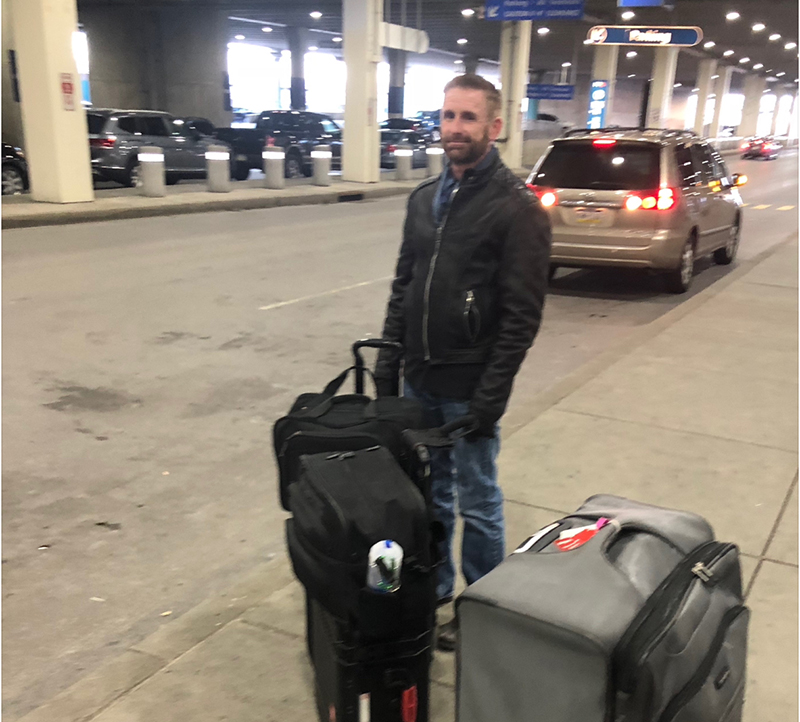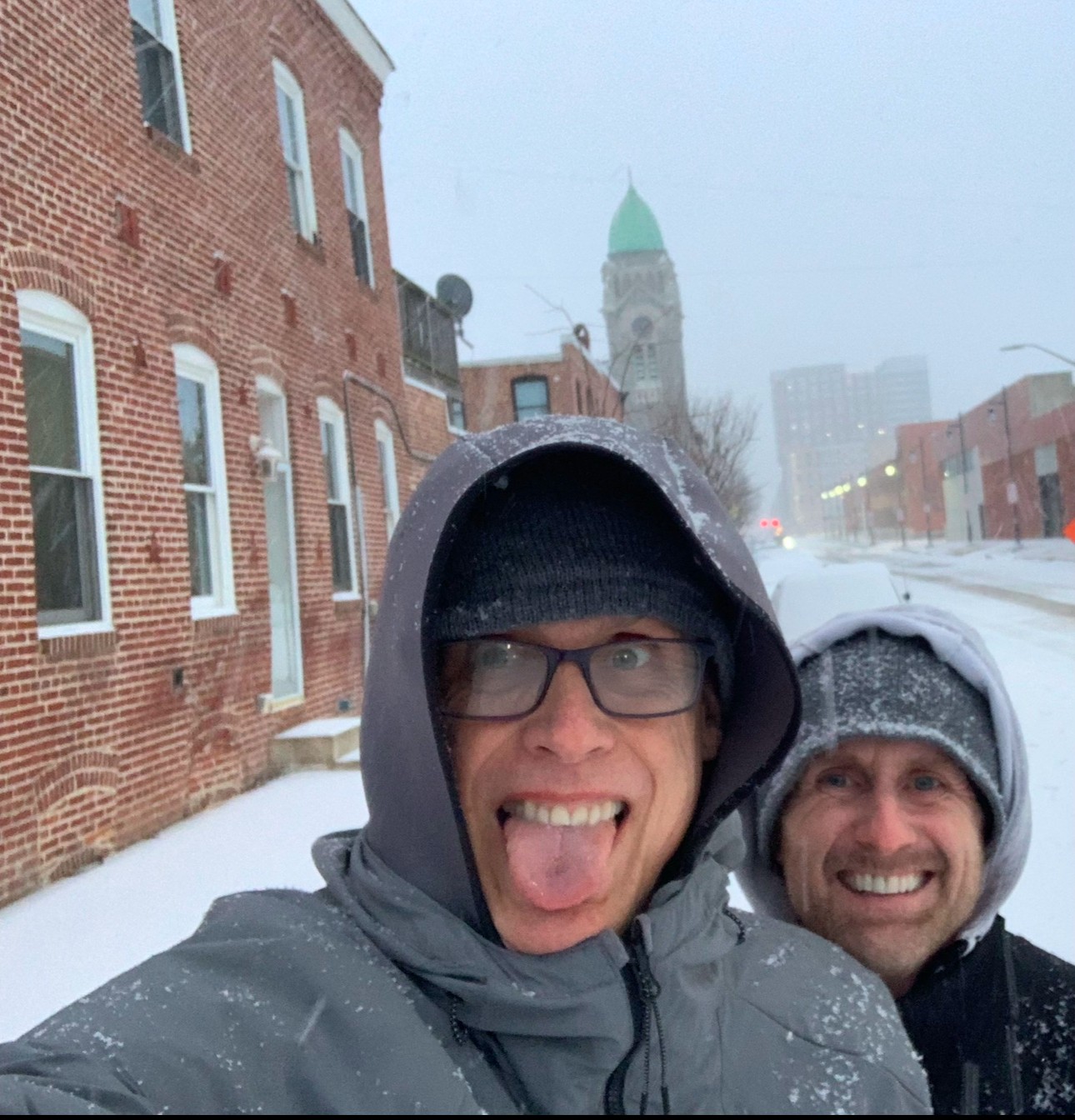We recently connected with Michael Gatty and have shared our conversation below.
Michael, looking forward to hearing all of your stories today. Before we get into specifics, let’s talk about success more generally. What do you think it takes to be successful?
I think it takes a passionate, overwhelming and obsessed urge to do something better and different — to improve on an existing service or product — that drives you to eat, sleep and breathe that product or service until you put all the divergent pieces together and suddenly a new thing emerges. That’s what it takes to be successful: a thirst and questioning of the status quo, a drive to innovate, and a desire to do something better than anyone else in the world. Whether it’s make a donut different than anyone else makes, an entree that twists around a norm, or a hotel room that changes the way travelers think of a hotel stay. What the innovation is doesn’t matter: it’s the passion to drive that innovation that makes success.

As always, we appreciate you sharing your insights and we’ve got a few more questions for you, but before we get to all of that can you take a minute to introduce yourself and give our readers some of your back background and context?
I began my career in photography on September 13, 2001 at Ground Zero. My dad, who was a magazine publisher at the time, couldn’t get a photographer to venture to the World Trade Center site to photograph the rescue operations. He knew I was unhappy in my career at the time: human resources at Target. He said, “if not now, when?” That’s a question I have asked myself ever since, especially as I’ve lost my husband of 21 years to a 7 year battle with cancer: if not now, when?
Ground Zero launched my career. It ended my life as I knew it, then. Since then, there’s been other “Aha!” moments: deciding to work nationally instead of locally, deciding to focus on corporate photography services instead of news and journalism, landing a job with HBO promoting Game of Thrones, working with a news paper out of Poland to cover breaking news in Washington, DC in a way that — at the time — was ground breaking. And, of course, the death of my husband. I’m still trying to figure out what that means for my career. I’m still putting pieces back together to remake me. What’s emerging is different that the me of six months ago — the me before Matthew passed away. whether that’s good or bad remains to be seen. But it’s definitely a different me, just like the me that emerged after 9/13/2001 was transformed.
Let’s talk about resilience next – do you have a story you can share with us?
The line stretched around the shoe department at Nordstroms Department Store, and Steve Madden, the shoe designer, sat at a folding table waiting to sign autographs.
“In just a few minutes you’ll get your picture with Steve Maddedn!” Shouted an MC from MTV into a rhinestone studded microphone. “Can you believe you’ll meet him?”
I took a test picture, and the photo spat out the high speed $3,000 photo printer I’d just purchased to tackle these high profile meet and greets. I took a second, expecting the same result.
Only a solid black 4×6 would print. No image. No Steve Madden.
I rebooted the computer. Did another test shot. All was good. The image was perfect.
But not the second. The second was another black rectangle.
I didn’t know what to do. The line continued to form. Literally hundreds of people waited, staring at me, waiting for the signal they’d get their photo with their shoe hero.
I couldn’t get the system to work.
I thought, “I wonder what would happen if I just left. Left the equipment right here. Just walked out with the camera in my hand. How bad could it be?”
I didn’t leave. I took the photos, and handed out business cards so people could find their images. I felt like I’d totally failed. I didn’t charge the client for the shoot.
I realized later what had gone wrong. The client had insisted I extend a USB cord connecting the camera to the computer; I didn’t know when I did that, data just fell apart getting to the computer and the printer interpreted that data as being black mush. When I shortened the cord back to the proper length, the system worked flawlessly.
To this day, I now never change my equipment immediately before a shoot. Not without extensive testing. And I call the shots on all shoots. The clients can give me their input, but ultimately, they are hiring me to do a job and be the expert.
How about pivoting – can you share the story of a time you’ve had to pivot?
Just before COVID, we were an event photography business that mainly provided green screen photography at large functions, nationwide. That was about 75% of my business. During and after COVID, green screen dried up. It became just a little dated. Now, about 75% of my business is doing head shot photography at events or in corporate offices. That’s been a great fit, and a smart pivot.
Another example is earlier in my career. I was happily shooting freelance in Washington, DC as a US Senate Gallery Press Photographer. When the Washington Post, however, fired all their staff photographers and those photographers decided to go out and work freelance, photography rates in our nation’s capital dried up. I saw an advertisement for Southwest promoting $49 non-stop air to Orlando. $49 was cheaper than parking at the Marriott I had a job at that afternoon. I thought, “why am I not working in Orlando?” So I began an Orlando website, promoting what I did in DC, but for Orlando. Then other event cities, seven, nationwide, all serviced by Southwest.
DC Event Photos became US Event Photos as a result of that Southwest advertisement. And, I went from working locally to nationally.
Contact Info:
- Website: https://www.useventphotos.com/
- Instagram: https://instagram.com/USeventphotos
- Facebook: https://www.facebook.com/Useventphotos/
- Linkedin: https://www.linkedin.com/in/michaelgatty/
- Youtube: https://www.youtube.com/channel/UCW3A8jRsCpD1p2G3YHxDVzQ
Image Credits
Mike Gatty/ US Event Photos


